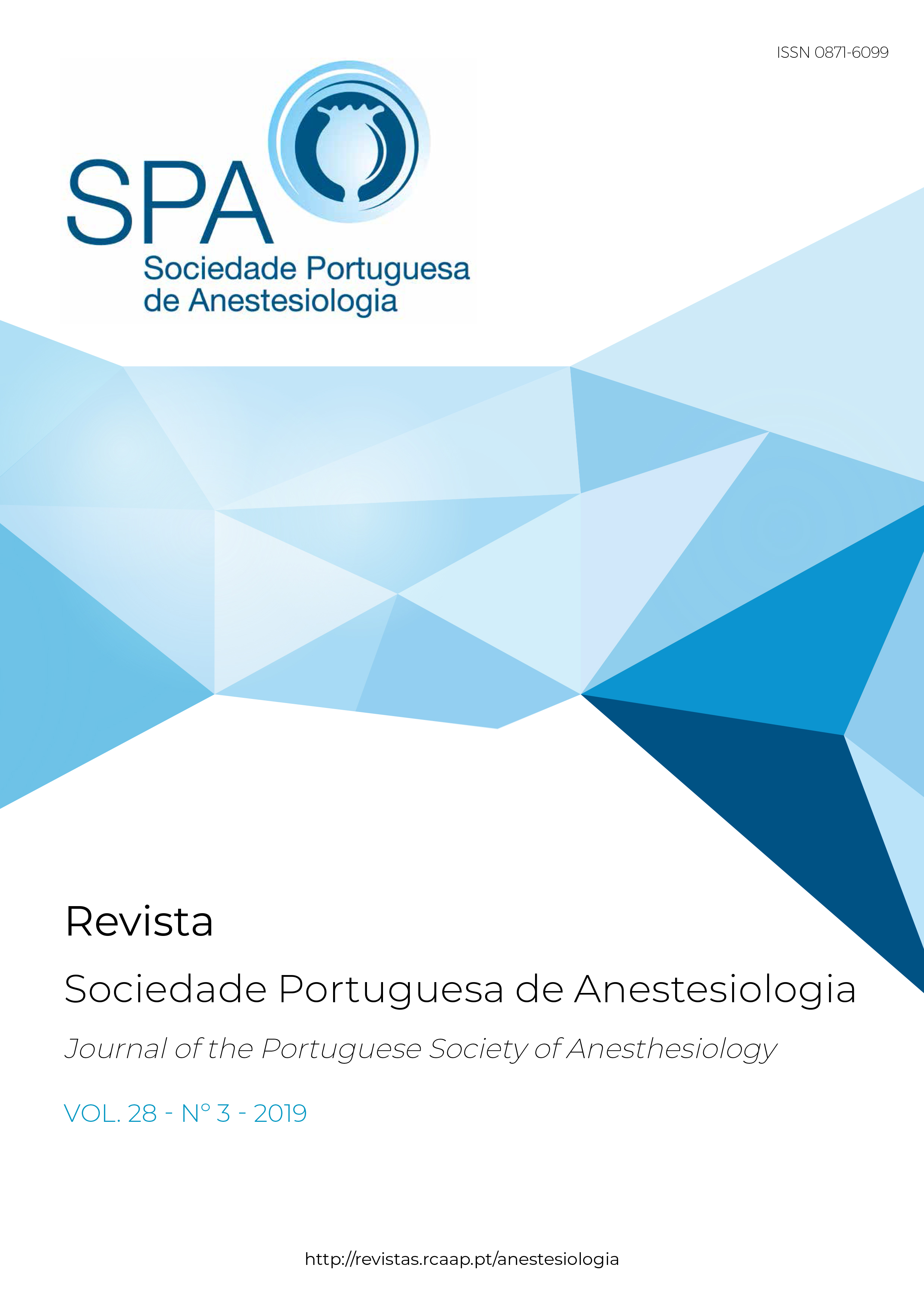Difficult Airway in the Prehospital Emergency Setting
Portuguese Reality
DOI:
https://doi.org/10.25751/rspa.18115Keywords:
Airway Management; Airway Obstruction; Algorithms; Emergency Medical Services; Intubation, IntratrachealAbstract
Introduction: It is estimated that advanced airway management is particularly difficult in prehospital emergency context. Due to the lack of Portuguese data, it was intended to characterize the incidence of
difficult and failed intubation in this environment, understand the expertise of physicians in this area and describe the most used and potentially useful adjuvant materials.
Methods: An online and anonymous survey was conducted for the medical operators of the 44 Medical Emergency and Resuscitation Vehicles (VMER).
Results: We obtained 120 valid answers. There were 1878 tracheal intubations in one year, 378 difficult (20%) and 78 failed (4%). It was found that non-anesthesiologists had a higher rate of failing intubation compared to anesthesiologists (p = 0.006) and those who performed intubation less than once a week compared to
those who perform intubation more than once a week (p = 0.003). The stylet was the most used equipment in difficult airway and the videolaryngoscope was referred as the most useful. The training of physicians was considered to be insufficient according to the majority of respondents.
Discussion: There is a need to develop algorithms and regular training programs for prehospital doctors. The videolaryngoscope should be considered in this environment. We present a proposed algorithm for
airway management in prehospital emergency context.
Conclusion: Management of the airway is a competence of the prehospital emergency professionals, being central to wage its effective training. The existence of difficult airway protocols and new adjuvant materials may facilitate the approach of these cases.
Downloads
References
2. Rehn M, Hyldmo PK, Magnusson V, Kurola J, Kongstad P, Rognås L, et al. Scandinavian SSAI clinical practice guideline on pre-hospital airway management. Acta Anaesthesiol Scand. 2016 ;60:852-64. doi:10.1111/aas.12746
3. Lockey DJ, Crewdson K, Lossius HM. Pre-hospital anaesthesia: The same but different. Br J Anaesth. 2014;113:211-9. doi:10.1093/bja/aeu205
4. Jacobs P, Grabinsky A. Advances in prehospital airway management. Int J Crit Illn Inj Sci. 2014;4:57-64. doi:10.4103/2229-5151.128014
5. Lockey DJ, Crewdson K, Davies G, Jenkins B, Klein J, Laird C, et al. AAGBI: Safer pre-hospital anaesthesia : Association of Anaesthetists of Great Britain and Ireland. Anaesthesia. 2017;72:379-90. doi: 10.1111/anae.13779.
6. Ono Y, Shinohara K, Goto A, Yano T, Sato L, Miyazaki H, et al. Are prehospital airway management resources compatible with difficult airway algorithms? A nationwide cross-sectional study of helicopter emergency medical services in Japan. J Anesth. 2016 ;30:205-14. doi:10.1007/s00540-015-2124-7
7. Combes X, Jabre P, Jbeili C, Leroux B, Bastuji-Garin S, Margenet A, et al. Prehospital standardization of medical airway management: incidence and risk factors of difficult airway. Acad Emerg Med. 2006;13:828-34.. doi:10.1197/j. aem.2006.02.016
8. Combes X, Jabre P, Margenet A, Merle JC, Leroux B, Dru M, et al. Unanticipated difficult airway management in the prehospital emergency setting: Prospective validation of an algorithm. Anesthesiology. 2011;114:105-10.
doi:10.1097/ALN.0b013e318201c42e
9. Órfão J, Aguiar J, Carrilho A, Ferreira A, Leão A, Mourato , et al. Consensos na gestão clínica da via aérea em anestesiologia. Rev da Soc Port Anestesiol. 2016;25:7-28.
10. Apfelbaum JL, Hagberg CA, Caplan RA, Blitt CD, Connis RT, Nickinovich DG, et al. Practice guidelines for management of the difficult airway: an updated report by the american society of anesthesiologists task force
on management of the difficult airway. Anesthesiology. 2013;118:251-70. doi:10.1097/ALN.0b013e31827773b2
11. Natt BS, Malo J, Hypes CD, Sakles JC, Mosier JM. Strategies to improve first attempt success at intubation in critically ill patients. Br J Anaesth. 2016;117 Suppl 1:i60-i68. doi:10.1093/bja/aew061
12. Corso RM, Zampone S, Baccanelli M, Sorbello M, Gambale G. Prehospital difficult airway management: old things still work letter to the editor. World J Emerg Med. 2014;5:75-6.
13. Trimmel H, Beywinkler C, Hornung S, Kreutziger J, Voelckel WG. Success rates of pre-hospital difficult airway management: a quality control study evaluating an in-hospital training program. Int J Emerg Med. 2018;11:19. doi:10.1186/s12245-018-0178-7
14. Higgs A, McGrath BA, Goddard C, Rangasami J, Suntharalingam G, Gale R, et al. Guidelines for the management of tracheal intubation in critically ill adults. Br J Anaesth. 2018;120:323-52. doi:10.1016/j.bja.2017.10.010
Downloads
Published
How to Cite
Issue
Section
License
Articles are freely available to be read, downloaded and shared from the time of publication.
The RSPA reserves the right to commercialize the article as an integral part of the journal (in the preparation of reprints, for example). The author should accompany the submission letter with a declaration of copyright transfer for commercial purposes.
Articles are published under the terms of the Creative Commons Attribution Non-Commercial License (CC BY-NC).
After publication in RSPA, authors are allowed to make their articles available in repositories of their home institutions, as long as they always mention where they were published.


